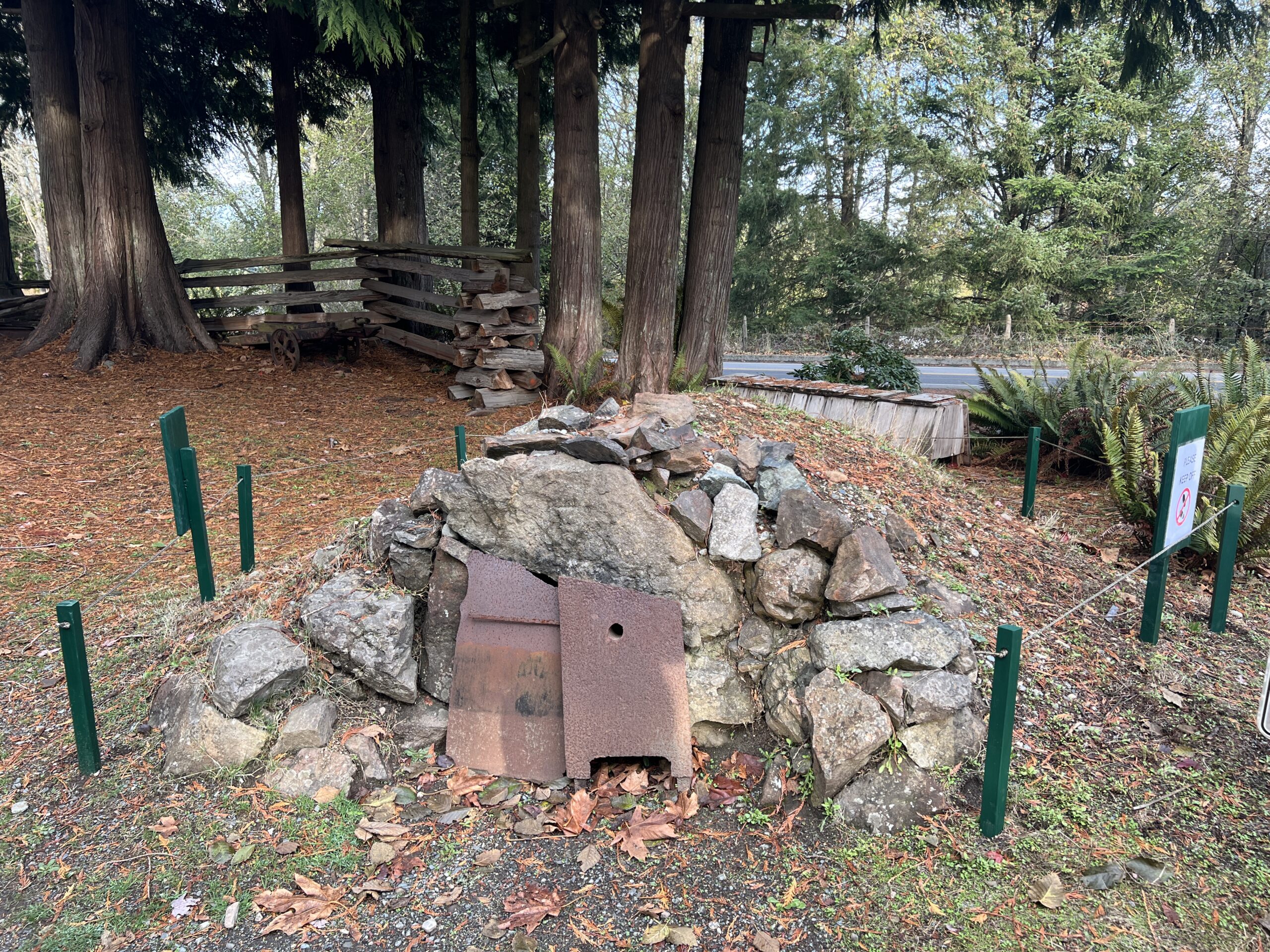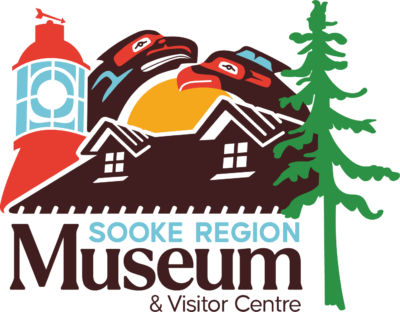
When you walk through the museum’s grounds you may notice there are lots of artifacts on the property. From first glance, it is very clear there are artifacts, but if you do not know what to look for, you may just miss this one… This would be the bake oven we have on the property. Located across from the large Sitka Round and Lord Western display, sits what looks to be a pile of dirt but it is not. The bake oven carries significant history within it’s walls.
In the Sooke Region, there are two known bake ovens. One is located on the museum’s grounds, while the other has been left in its original location in the Sooke Hills. This one is thought to be a larger version of the one at the museum. The bake oven, which is at the museum, was discovered in 1976 near the east branch of Twin Creek. By 1998, the oven was dismantled and stone by stone, reassembled on the museum grounds. The staff at the museum has used the bake oven in the past at Open Houses and school tours to bake bread.
So, what are bake ovens? Bake ovens are built “igloo-style”, using no mortar. There is a smoke hole at the top or rear. From 1911-1915 when the 27-mile-long flowline was being built, many workers constructed bake ovens near their campsites. Before going to sleep, workers would build up a fire in the oven, using branches and twigs of nearby Douglas fir. Then, a batch of coarse-grained dough made with their supply of hops yeast. Overnight, the dough would rise and in the morning the loaves of bread were placed in the oven to bake. The bread sat on the stone floor of the oven and the smoke hole would be closed. This way, as the men returned to their camps, they would come back to the smell of fresh baked bread.
This bake oven stands as a testament to the hundreds of workers who were employed by the Sooke Flowline Project. Situated beside the oven, are sections from the flowline itself. Together, the bake oven and flowline sections can tell a story of a working person.
To best preserve this history, we ask when visiting the museum, please do not stand or sit on the oven as it poses a risk to the integrity of the artifact.


